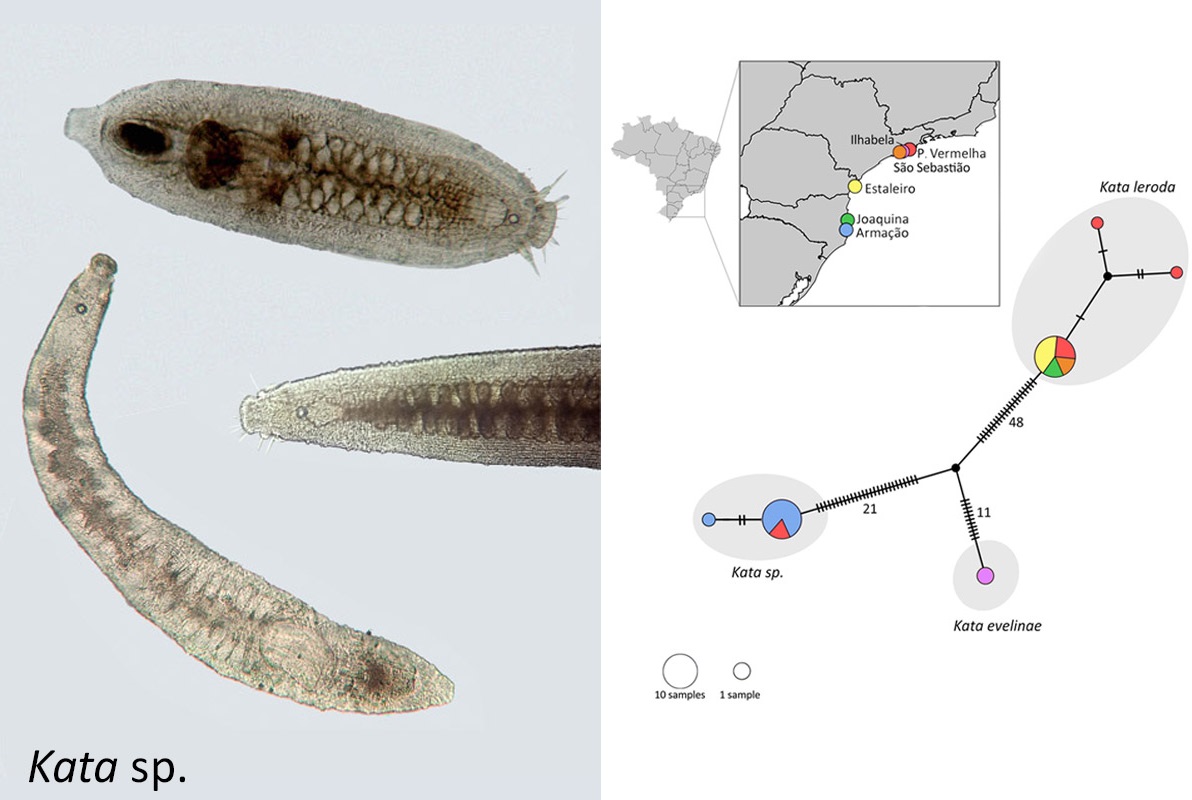Molecular Diversity of Meiofauna Flatworms from Brazilian Sandy Beaches
This study reveals the hidden molecular diversity of meiofauna flatworms—microscopic meiofaunal invertebrates that lives between the sand grains—across the Brazilian coastline. Using partial 28S rRNA sequences, we uncovered different lineages within the genus Kata, identifying three distinct evolutionary units, including one potentially new species. Surprisingly, despite the lack of a larval stage, some populations showed high admixture across distances exceeding 900 km, suggesting occasional long-range gene flow or historical connectivity. This is the first population-level molecular study on Proseriata in Brazil and contributes significantly to our understanding of the enigmatic group meiofauna. The findings challenge traditional assumptions about limited dispersal and emphasize the value of molecular tools for species delimitation and biodiversity assessments. Our work fills critical gaps in the taxonomy and biogeography of marine interstitial fauna and sets a foundation for future integrative research combining molecular, morphological, and ecological data in sandy beach ecosystems.

Read the full article, here

